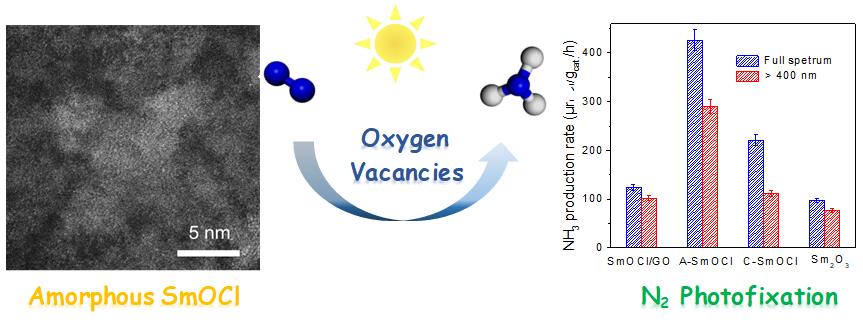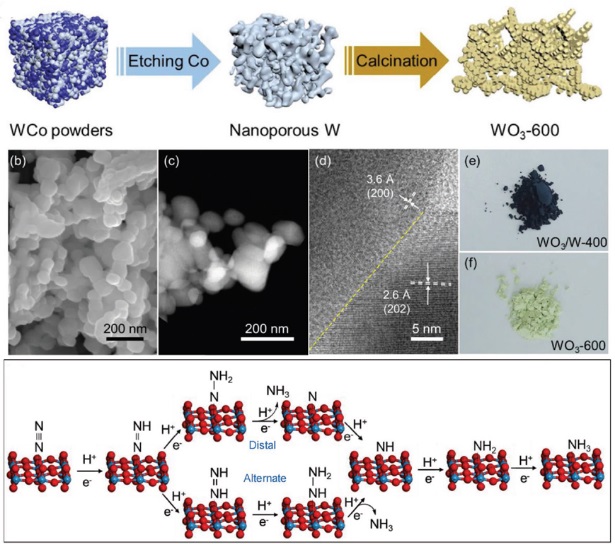Recently, Distinguished Professor Wang Liangbing from the School of Materials Science and Engineering, Central South University (CSU), has achieved high-efficiency nitrogen photofixation by developing a novel oxygen-vacancy-rich nano-material. The international authoritative journalsAdvanced Energy MaterialsandNano Energyhave published the research results consecutively.
Ammonia is one of the most abundant inorganic compounds in the world, which is mainly used in nitrogen fertilizers, refrigerants and chemical raw materials. The traditional Haber-Bösch ammonia synthesis process requires high temperature and high pressure, resulting in a large consumption of energy. Currently, how to realize direct conversion of nitrogen to ammonia by photocatalysis at room temperature under normal pressure is a hot issue among scientists. Wang Liangbing's team, through their newly-developed oxygen-vacancy-rich SmOCl nanosheet, has realized the high-efficiency nitrogen photofixation which allows direct conversion of nitrogen to ammonia. This amorphous SmOCl nanosheet exhibits excellent catalytic activity, with the ammonia formation rate up to 426 μmol·gcat.−1·h−1. This achievement has been published in the international journalNano Energy, with the School of Materials Science and Engineering of CSU as the first unit, Hou Tingting, a postdoctoral fellow, and Guo Ruiqi, a 2016-year undergraduate, as the co-first authors, and Wang Liangbing as the corresponding author.

(The picture shows the amorphous SmOCl nanosheet developed by the research team and schematic diagram of its nitrogen photofixation)
Although the oxygen vacancies are excellent nitrogen photofixation active sites, they are easily filled by water or oxygen atoms in the reaction system, thus gradually losing reactivity. Therefore, the research team has developed a grain-boundary-rich WO3nanomaterial (WO3-600). The material can generate a large number of oxygen vacancies in situ under light conditions, exhibiting good catalytic activity, its ammonia production rate reaches 230 μmol·gcat.−1·h−1, and it can still retain nearly 100% catalytic activity after 10 cycles of reuse. The result was published in the top energy journalAdvanced Energy Materials, Central South University is the first unit, Hou Tingting, a postdoctoral fellow, is the first author, Professor Liang Shuquan, Professor Wang Liangbing, and Associate Professor Zheng Xusheng from the University of Science and Technology of China as co-corresponding authors of the paper.

(The preparation process, morphology and nitrogen photofixation mechanism of WO3nanomaterial developed by the research team)
The research has received strong support from the National Natural Science Foundation of China, the Huxiang High-level Talent Aggregation Project, the Hunan Excellent Youth Fund, the Central South University Innovation Drive Program, and the Central South University Early-Stage Research Fund.
Source: School of Materials Science and Engineering











